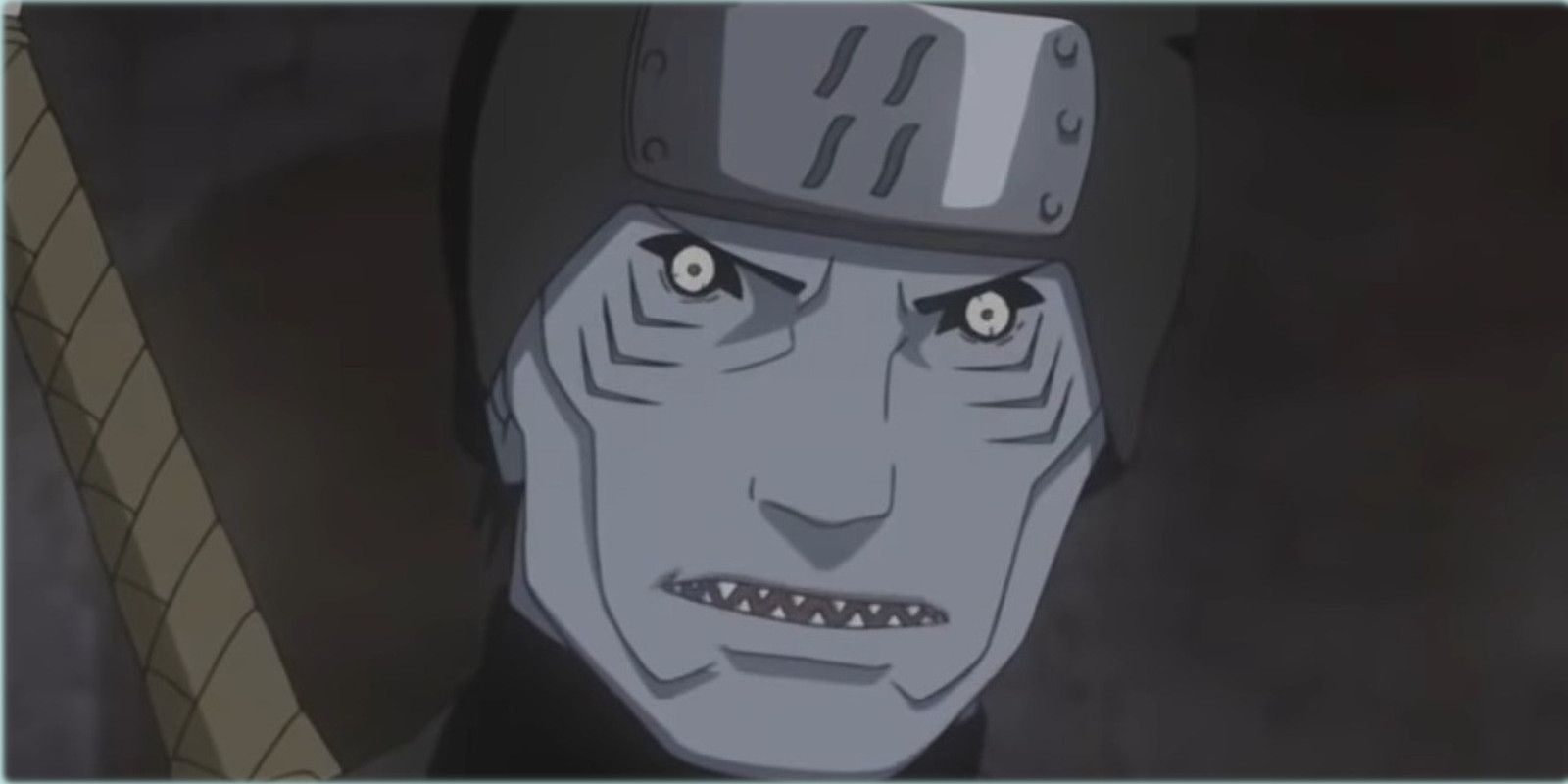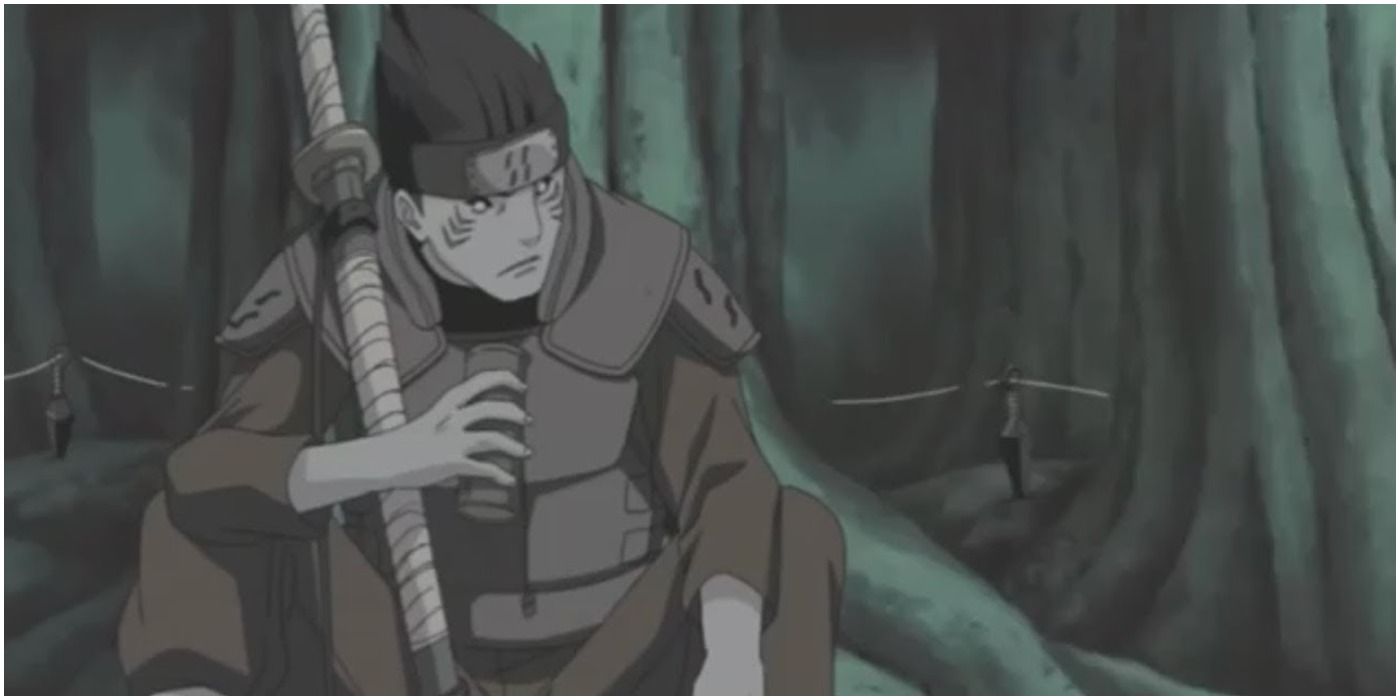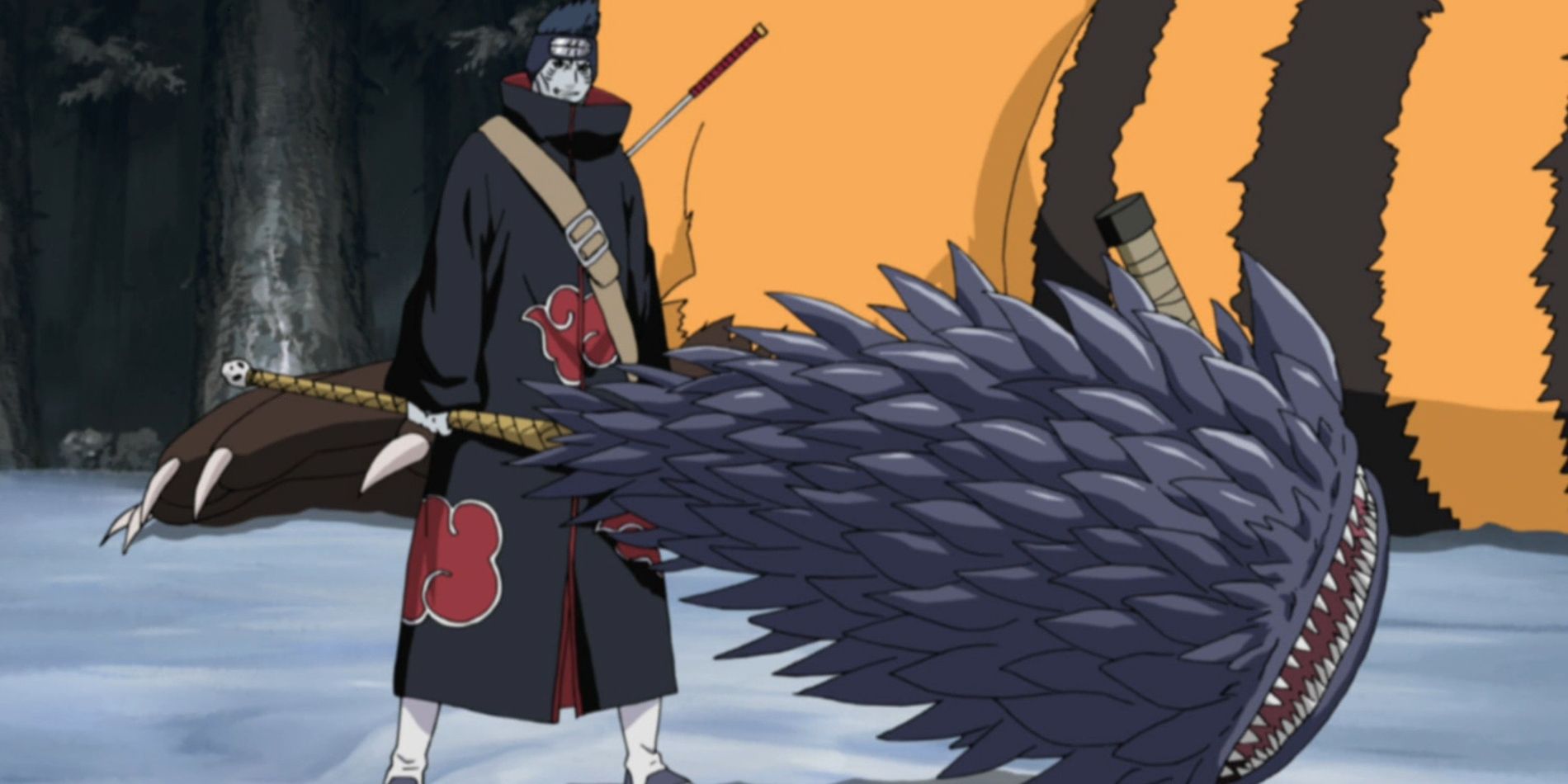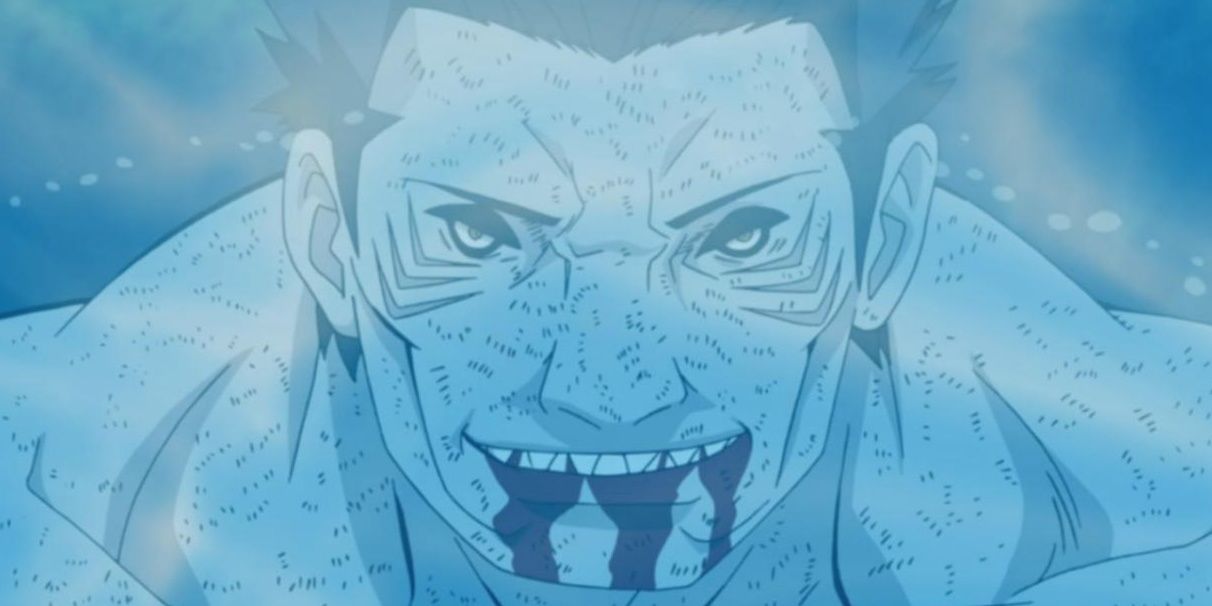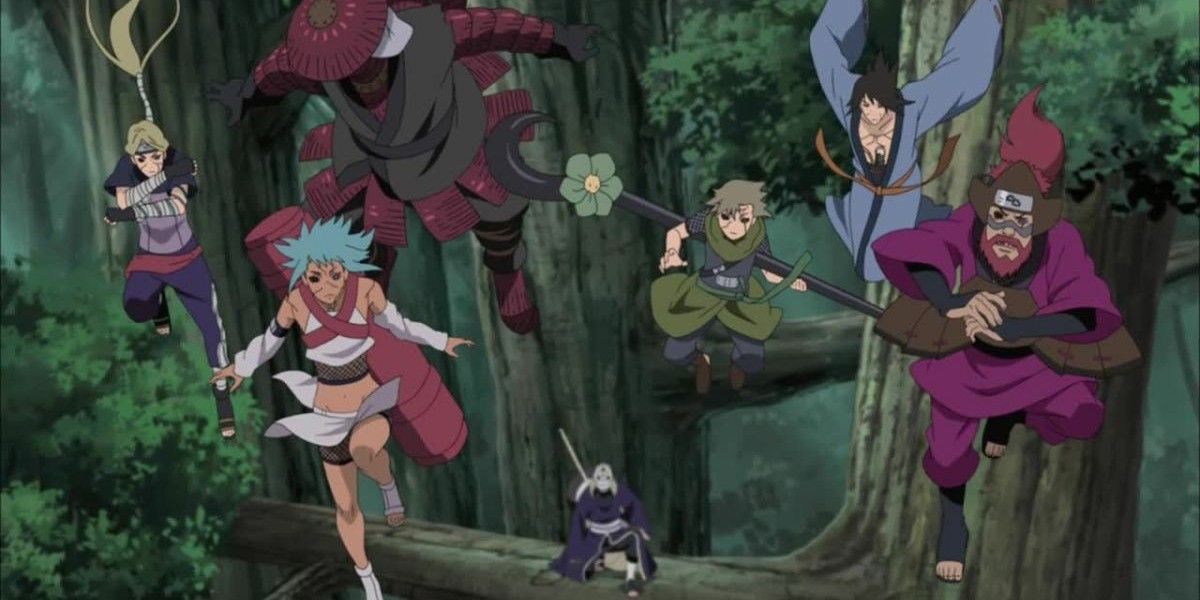The following article contains brief discussion of suicide and self-harm.
Naruto is packed with an assortment of villains with insightful backstories, complex emotions and interesting character arcs. The most memorable group of villains in the story, the Akatsuki, homed powerful rogue ninja who had come together with a common goal in mind. There was one Akatsuki member in particular who was fully aware of the organization's plot and supported it until his demise. This dedication led to one of the most important and impactful antagonist deaths in the anime.
The Monster of the Hidden Mist, Kisame Hoshigaki, was the second Akatsuki member to be introduced, alongside Itachi Uchiha. His initial demeanor portrayed a boisterous and violent counter to Itachi’s reserved nature. It was not until his final showing in Naruto that the depth of his character became fully apparent.
Kisame Hoshigaki: The Manipulation of the Monster
During Kisame’s time as a ninja of the Hidden Mist, he was tasked with escorting intel-units and keeping them out of harm's way. However, this task came with a secondary objective: ensure the information they held never reached enemy hands, even if it meant their deaths. This enforced initial mindset installed a feeling of solitude for Kisame, separating him from his comrades as a failsafe. It also warped his brain into the belief that secrets being kept trumped the importance of life. He became a vassal of information protection.
The danger of such a forced worldview meant that deviating from these ideals would have a grave effect on Kisame's state of mind. Naturally, this occurred in the form of his commander, Fuguki Suikazan, selling secrets to enemy nations. The betrayal rocked the foundation of Kisame’s worldview and sent him into a questioning of his purpose. All the people he had killed in the name of protecting vital information and all the work he had done was for naught -- he was lost in a world of lies and treason.
The reconstruction of Kisame came through the invitation into the Akatsuki organization, personally offered by Obito Uchiha himself -- though posing as Madara Uchiha at the time. The Eye of the Moon Plan offered Kisame an opportunity to reaffirm his purpose in the world with a loyalty that was unquestionably solid. Unlike many of the other members who were focused on individual ambitions or lacked the foresight to care for such a giant operation, Kisame knew the importance of ensuring the plan's success to break out of the cycle of lies. Tragically, his misinformed notion of a ‘World of Truth’ was, in fact, the biggest lie of all.
Kisame Was the Man Who Stuck to His Ideology in Naruto
It is no accident that Kisame was the last recruited Akatsuki member still standing as Naruto neared its end. As one of the few who was informed of the organization's real intentions, he was privy to information the likes of Hidan or Kakuzu lacked. Due to this, he was acutely aware of the need to stick to the mission and see it through without being sidetracked by selfish desires. As his comrades were falling all around him -- or betraying the cause -- he remained true to his ideology. The dream for a ‘World of Truth’ was his purpose and he showed a dedication to achieve it on the same level as Obito.
The irony of his commitment was the lack of such by even those who had orchestrated the organization. Itachi joined to ensure the protection of the Hidden Leaf, Zetsu was secretly manipulating Madara to resurrect Kaguya Ōtsutsuki and whilst Obito’s was dedicated, his view of reality was deformed by the loss of Rin, leading him to wanting to create an illusionary world to see her again. Kisame knew the difference between reality and fabrication and wanted to live in a world of truth, unable to cope with that treasonous world the ninja thrived in.
The Defiant Death of a True Ninja
Out of all the Akatsuki deaths in Naruto, Kisame was the only one who died for the organization's cause. There were those who died in combat; Hidan was defeated for his blundering selfishness, Kakuzu fell in a meaningless combat that fulfilled nothing for Akatsuki’s ambitions and Konan was slain for her betrayal. For those who ended their own lives, Sasori allowed himself to be killed due to his own warped idealization for puppetry and shortcomings in abandoning his humanity, Deidara self-destructed out of pride and Nagato sacrificed his own life to resurrect those he had killed during his attack on Konoha.
Kisame was not turned by Uzumaki Naruto to view the world in a different light, nor did he allow himself to be overcome with emotion to make a choice that hindered the Akatsuki's end game. Down to his very last decision to take his own life, he was clear of mind and considered the detriment his capture had on the mission. In fact, Kisame’s self-acceptance allowed him to understand that he was not a worthless human-being, but a man who knew the weight of his purpose and would do anything to ensure the world he dreamed of would come true -- even if he was not going to be a part of it.
After his death, the information within Kisame’s mind was out of reach for the protagonists while the intel he had gathered on the entire Allied Shinobi Forces, including the location of Naruto and Killer B, successfully reached Obito. This intel allowed the antagonists to amend their plans and operate more efficiently when commencing the war. In his death, Kisame altered the direction of the Naruto manga and ensured his comrades were in the best possible position.
As other Akatsuki members came and went, Kisame remained. He carried the beacon of loyalty to the mission, even if his resolve was not obvious during the story until his demise. Kisame stands alone on the stage of Akatsuki who remained faithful to the construction of a new world, and his death marked the tragic and compelling conclusion to a life of manipulation and steadfast ideology.

